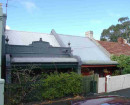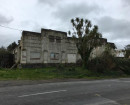HENRY'S NO.1 MILL
OFF MOUNT SABINE RD AND WEST BARWON TRACK BARRAMUNGA, COLAC-OTWAY SHIRE
-
Add to tour
You must log in to do that.
-
Share
-
Shortlist place
You must log in to do that.
- Download report
Statement of Significance
What is significant?
Henry’s No.1 Mill was the largest sawmill in the eastern Otways, operating from 1904-1927. The mill settlement included a boarding house, bakery, store, billiard room, post office and school, with huts for single men and cottages for families. The mill site extends in a clearing along the West Barwon river, and features intact tramway formations, extensive scatters of domestic debris, mature exotic trees, and numerous foundations of industrial and residential buildings.
How is it significant?
Henry’s No.1 Mill is of historical and archaeological significance to the State of Victoria.
Why is it significant?
Henry’s No.1 Mill is historically important as a characteristic example of a large, isolated sawmill with associated settlement. Sawmilling sites are important to Victoria for their role in providing a vast range of timber products for use in domestic, commercial and industrial contexts. Henry’s No.1 Mill was a long-established bush mill (23 years), supplying timber to centres throughout western Victoria, including Colac, Geelong, Hamilton and the Ballarat goldfields. It was associated with a major figure in the Victorian sawmilling industry, W. R. Henry.
Henry’s No.1 Mill is archaeologically important for its potential to yield artefacts and evidence which will be able to provide significant information about the technological history of sawmilling, and the cultural history of sawmilling settlements.
[Source: Victorian Heritage Register]
-
-
HENRY'S NO.1 MILL - History
Heritage Inventory History of Site: Financed and managed by W.R. Henry, the sawmill began operating in 1904, following the southward extension of a timber tramway from the Noonday Creek to the West Barwon valley via a 440m tunnel. Located 10km south of Forrest, the mill's isolated location required employees and their families to live at the site. About 100 people were serviced by a general store, post office, butcher, baker, school(S.S. 3601), billiard room and boarding house. The mill was partially burnt out and abandoned in 1927.
HENRY'S NO.1 MILL - Interpretation of Site
Heritage Inventory Interpretation: Sawmilling operations were focused on the lower eastern part of the site below the tramway, to facilitate efficient handling of logs and timber. The north west of the site housed families in small cottages and the mill school, with single men's huts, store, boarding house, stables etc. in between. Scrubby grass in the higher, southern part of the site conceals brick rubble possibly associated with manager's residence and married men's quarters (see also Houghton, N, in prep. pp.112-113 for reconstructed plan).
Heritage Inventory Description
HENRY'S NO.1 MILL - Heritage Inventory Description
Large scrubby clearing extending approximately 500 metres along south bank of West Barwon river, containing remains of early 20th century sawmill and settlement. The site features intact tramway formations, extensive scatters of domestic debris, mature exotic trees and numerous foundations of industrial and residential buildings.
Heritage Inventory Significance: State. Historically, this is one of the largest mills in the Otway region; a remote sawmill home to about 100 people. It had an unusually long period of operation (1904-1927); steam locomotives and tunnels were used in the timber tramway linking the site to the outside world.The site is archaeologically important for its potential to yield artefacts and evidence.
Heritage Inventory Site Features: The site forms a large clearing on the south bank of the West Barwon river, surrounded on all sides by steeply forested ridges. There is domestic debris in the north-west of the site that consists of several discrete accumulations of brick and stone rubble, along with scattered bottle glass, ceramics, steel pipes. A tramway cutting traverses the site with only the original earthworks extant. In the eastern part of the site are scattered tram wheels, steel rails, brick rubble, and logs that can be discerned beneath the vegetation cover.Sawmill foundations and associated out-buildings, sawdust heap, timber tramway earthworks, scattered tramway wheels, domestic debris of house sites.
Archeological Potential: Relics/Deposit,Remnant Structure
-
-
-
-
-
HENRY'S NO.1 MILL
 Victorian Heritage Register H1815
Victorian Heritage Register H1815 -
HENRY'S NO.1 MILL
 Victorian Heritage Inventory
Victorian Heritage Inventory
-
-







